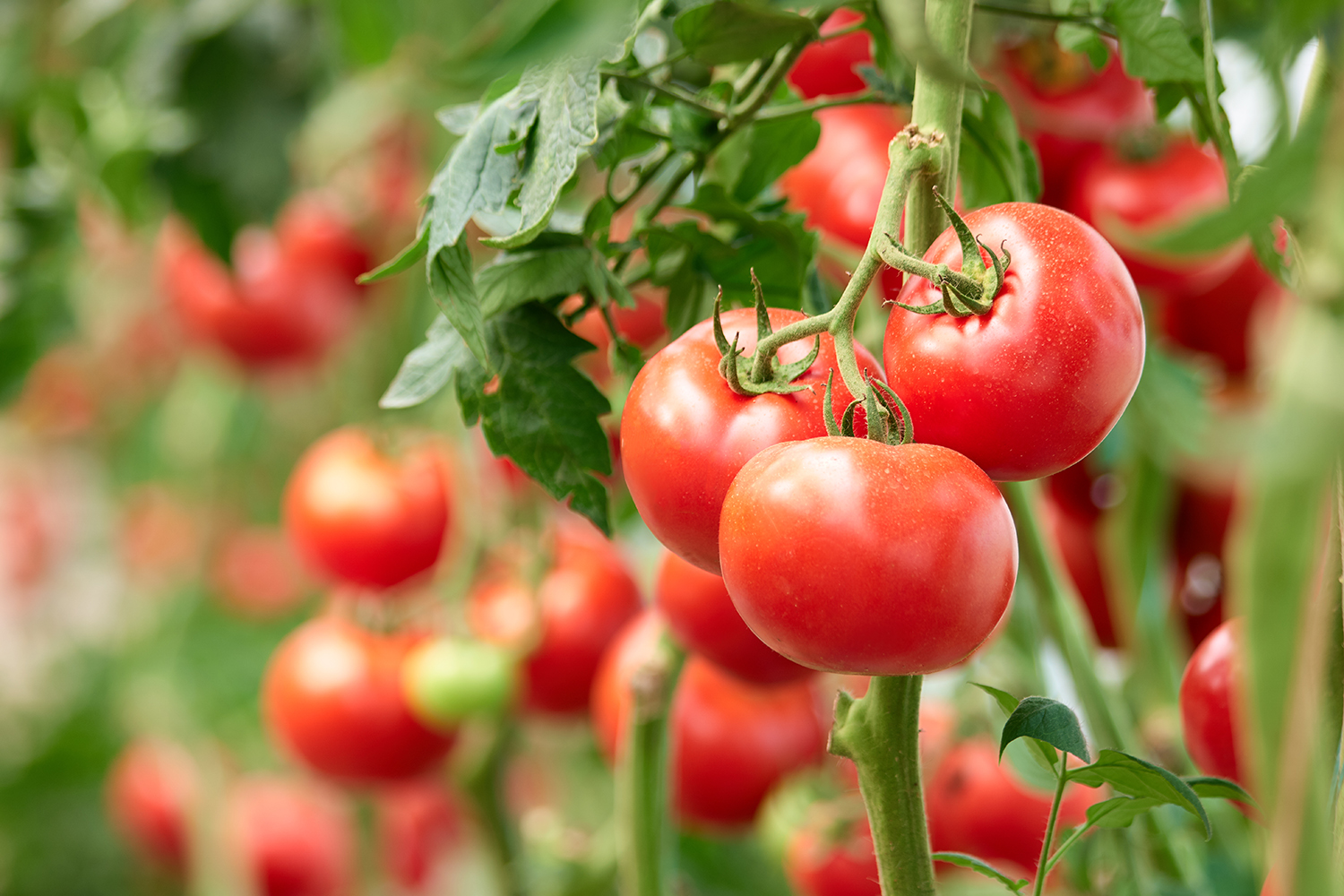By Lisa Lewis of the Greene County Master Gardeners
Few things can top the multi-sensory pleasure of eating a tomato plucked fresh from the vine of one of your lovingly and patiently tended plants. The complex taste of sweet and tart are a delight to the taste buds.
Whether you are planting tomato plants you have purchased at your local nursery or started yourself from seed indoors and whether you are growing in the garden or a container, the following tips apply.
First, when to plant? It is only somewhat helpful to say a time of year, such as just after Memorial Day or Mother’s Day. Some years that would mean we are safely into prime tomato planting season – no danger of frost and air temperature reliably above 65 degrees during the day and above 55 degrees at night. Some years that might mean still too cold and too rainy to work the soil or already very hot and dry. Instead, it is better to follow the cues nature gives us – a science called phenology – and plant our tomato plants when dogwood trees or lily of the valley are in bloom.
How deep to set the plant in the soil? Research shows that it is better to plant deep. Unlike most plants, tomatoes thrive when an inch or two of stem is planted below the soil line. Remove a few leaves if you need to by pinching them off. The buried stem will quickly set roots that absorb nutrients along with the already established roots. This allows the leafy and flowering parts of the plant to take off growing at an accelerated place.
If your tomato plant is a determinate variety, that means it tends to reach a set height and stop growing and will likely not require staking or caging for support. Indeterminate varieties tend to keep growing until stopped by frost, and they require support. There is some evidence that when support is required, staking tends to produce larger tomatoes while caging tends to produce more tomatoes, but the difference is not huge in the home garden. Supports should be put in place at the time of planting, and plants should be set two to three feet apart to allow good air circulation. Watering should be done deeply and frequently enough to avoid problems caused by large variations in soil moisture (blossom end rot, splitting). Tomato plants require at least six hours of full sun a day, preferably more. Rotate planting location to avoid planting where tomatoes/eggplants/potatoes/peppers have been planted in the past two years to minimize common diseases and nutrient depletion.
The tomatoes are the fruit produced by the self-fertilized yellow flower of the tomato plant. Though usually not a problem, if your tomatoes do not flower and set fruit, consider a soil test. Too much nitrogen and not enough phosphorus may keep the plants from blooming. Wind, high temperatures (above 85 degrees), and too little water may also cause lack of fruit.
While the plant is growing, check the space where the branches leave the main stem. If you see a “sucker” branch growing out from there, pinch or cut it off as they produce few tomatoes.
If pests such as tomato hornworms, Colorado beetles or aphids are harming your plant, either handpick them, hose them off the plant or spray them with insecticidal soap or another organic solution. A few times during the season side dress with compost or organic fertilizer starting when the flowers appear. Your efforts will be richly rewarded with dozens of tomatoes to eat, freeze. or can, with harvest generally starting in late July or August.
SOURCES: Delahaut, K. Phenology. University of Wisconsin-Madison, Extension, May, 2012; Pacilli, S. Phenology – The Ultimate Garden Planner. Penn State Extension Philadelphia Master Gardeners, January, 2018; Kalb T. How to Stake Tomatoes. Should You Stake, Cage or Trellis? North Dakota State University Extension.
